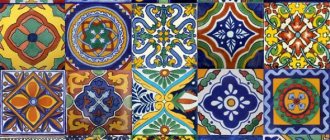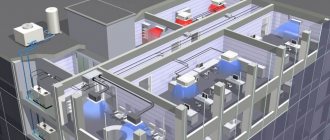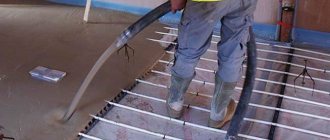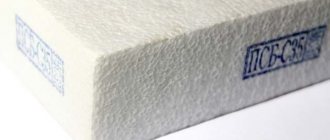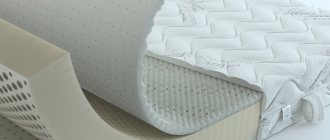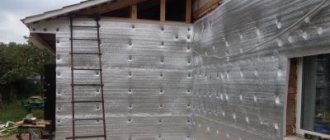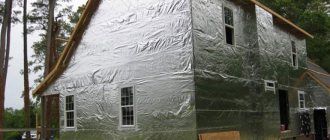Experienced builders are probably familiar with such material as fireclay. The raw material for it is white kaolin clay, which is exposed to high temperatures during processing, which makes it more heat-resistant.
Having undergone thermal hardening in furnaces with hot temperatures, fireclay acquires strength comparable to stone. After this, it is crushed, and the resulting product is usually called fireclay clay. This material is quite often used in the construction of heat-resistant objects, as well as in the manufacture of refractory bricks and beautiful decorative items.
What is fireclay clay?
To get a clearer understanding of fireclay clay, it is enough to know the process of its preparation:
at the first stage, either pieces or compressed briquettes are formed from clay;
on the second, they are fired at high temperatures (from 1200 to 1500C);
in the third, the fired source material is crushed to a fine-grained or coarse-grained fraction.
It is precisely because fireclay clay is fired that it is also called fireproof.
Fireclay clay: composition and technical characteristics The composition of fireclay clay mainly includes highly dispersed hydroaluminosilicates, such as MgO, Si02, CaO, Na20, A1203, Fe203, K20.
Obtained by firing and sintering, refractory clay has the following technical characteristics:
moisture content – no more than 5%;
https://youtube.com/watch?v=pUY70wQ-r3Y
the ability to absorb water is on average 7.8% and depends on the composition of the clay;
grain size – on average 1.9 mm;
fire resistance – within 1530-1830 C.
Thanks to this composition, processing and characteristics, fireclay clay, when mixed with water, forms a mass with good plasticity, which when dried has the strength of stone.
Disadvantages of refractory
Like any material, refractory clay has not only advantages, but also disadvantages:
- the material has a high price;
- The preparation of the solution is carried out strictly according to technology.
On a note! In large chain construction stores, such as Leroy Merlin or Your House, you can purchase fireclay clay at a more affordable price. There it is usually sold in 20 kg bags. The second option to save on the purchase of raw materials is to contact the sales department of the building material manufacturer itself. Also, the cost will be significantly lower when purchasing a large batch in bulk.
How to choose quality clay
Fireclay clay called “Kaolin” and ready-made mixtures are sold in construction stores. There are good reviews about both Russian and foreign manufacturers of this heat-resistant material. The best is considered to be fireclay produced at Western European enterprises.
When choosing materials, pay attention to the year of production and its quality. A high-quality mixture and clay do not contain particles exceeding the fraction size indicated on the packaging
The mixture for preparing the solution should not contain crushed stone or sand larger than 2.5 mm.
The letter “U” on the package indicates that the fireclay is made from recycled, recycled material. The letter “Ш” means that the material has not been recycled, it is better suited for laying the firebox.
Construction materials are stored in specially equipped warehouses. If fireclay is stored in a dry room, in sealed bags, at a temperature from plus 40 to minus 40 degrees, then the shelf life of mixtures and clays is unlimited. Long-term storage (more than three years) in conditions of high humidity will lead to deterioration of the properties of the material due to moisture saturation.
Types of clay, its characteristics
It comes in different colors: blue, white, red, red, gray, black. White or kaolin was formed during the destruction of granite, juicy red contains metallic impurities, gray consists of kaolinite minerals, the composition of the black mass is the same.
Based on the presence of the main component (clay minerals), there are several types:
- Fat;
- Medium fat content;
- Skinny (non-fat).
In fact, there is no fat in it and it is impossible to determine its presence. But high plasticity allows us to talk about the softness, slipperiness and soapiness of the material, and this almost always correlates with the presence of fat.
Determination of clay fat content
How to determine the fat content of clay yourself? This is necessary in order to know how the finished mass will behave. And how to improve its qualities. Initially, it already contains some amount of sand, and it is this that affects the fat content. If there is too much of it, then the clay is skinny. To check, you can conduct a small experiment.
You should soak it, you can soak the whole mass, because it is pre-soaked to prepare the solution. After a couple of days, roll 2 small balls, leaving fingerprints on them, dry them and carefully look at what happens. If your lumps have shrunk in size and cracked, you have a fatty variety. If the lumps crumble, then this is a skinny version of the material. If the lump has not crumbled, but there are no fingerprints or are hard to see, then the clay is thin. And if your product does not have cracks and has not crumbled, then it is an almost ready-made masonry mortar. Having established the level of fat content, you can independently prepare clay mortar for laying stoves.
Experts say that a mixture oversaturated with fatty clay will not affect the quality of the heating structure. But too much sand in the solution can have a negative effect: the dried solution will crumble and crumble. Clay and sand should be mixed in the required proportions. High-quality clay is the main condition for the durability of the structure being built. One of the main requirements is plasticity. Plasticity is the ability to take any shape, without the appearance of cracks, tears or seams, and the “ability” to maintain these shapes due to aggressive environmental influences.
Plasticity of clay
Each type of clay has plasticity to a greater or lesser extent; due to the presence of this quality, it comes in three types:
- highly plastic;
- medium plasticity;
- low plasticity.
How to determine plasticity at home? By the way, plasticity is directly related to fat content. This means that you can independently increase or decrease the plasticity of the solution. So, knead it, roll it into a tight ball the size of a small fist, then press it between two boards. Press until cracks appear. If cracks appeared under low pressure, then the material is thin and low-plasticity; if cracks appeared after passing half the radius (close to the cake), then it is a highly plastic building material. The appearance of cracks at 1/3 of the compression height indicates medium plasticity.
There is another way: roll up flagella with a diameter of about 20 mm and a length of more than 20 cm and bend them into an arc. Flagella from low-plastic varieties will break when slightly bent. And the fatter the product, the more it will bend without cracks; this type can be bent into a ring or a ball. Based on the results of the experiment, the composition can be enriched (by adding clay) or depleted (by adding sand). A mixture mixed based on accurate data about the individual components will be of high quality.
Manufacturing recommendations
Construction stores sell ready-packed mixtures for masonry.
They consist of high quality clay mixed with fine sand. To make masonry mortar with your own hands, you have to take sand and clay from the area. Stove makers sometimes use several types of raw materials from different areas. In order not to make a mistake and not to bring the wrong material, it is useful to consult with local craftsmen.
Which clay to choose and how to determine its quality
Clay is a finely dispersed rock with a particle size of thousandths of a millimeter. The chemical formula of the bulk of the rock is Al2O3. This material is very plastic, susceptible to mechanical stress, clay paste will withstand the thinnest modeling. The volume of raw materials swollen with water increases up to two times.
The composition of clays includes oxides of iron and other metals, plant residues, hydrocarbons, carbonates, chalk particles, and iron sulfide. Impurities give this rock its different colors.
Fatty clays are finely dispersed and highly plastic. When dried, the raw material cracks greatly, although the dried pieces are highly durable. Such rocks contain from 3 to 15% sand.
Lean (sand-enriched) clays, on the contrary, have low plasticity. When dried, they become fragile, destroyed due to the high content of granular material and are close in composition to sandy loam. They contain more than 80% sand.
Clays of normal (medium) composition do not crack after drying and do not crumble under mechanical stress.
The quality of raw materials is determined experimentally. There are several ways to determine the fat content of clays:
Method 1. From clay that was soaked a day ago, roll sausages up to one and a half millimeters thick and up to 20-22 cm long. They wrap them around a cylindrical object with a circumference of about 50 cm.
Oily, viscous clay stretches smoothly and easily without breaking. When the raw material has a normal composition, small cracks will appear on the flagellum due to stretching. A rope of thin clay mass will break when stretched.
Method 2. The dry material is filled with water and softened to a liquid dough. The soaked mass is stirred with a wooden spatula and lifted up. Oily, viscous clay forms a layer on the blade that strongly adheres to the wood. Normal clay falls off the mixer in chunks. Skinny - everything falls off, only moisture remains on the stirrer.
Method 3. Press the newly rolled clay sphere with a plank. If the material has a greasy composition, cracks will appear on the sphere when it is flattened to half its diameter. On raw materials of normal composition, cracks will appear when flattened by a third of the diameter, on thin clays - when slightly flattened.
Method 4. The clay is soaked and kneaded. The amount of water should be small, as for dumplings, elastic dough. A sphere with a diameter of 40-50 mm is rolled out of this material and a cake 25-30 mm thick is made. The samples are dried for a couple of days.
- Oily, plastic clay will develop cracks after drying.
- If the raw material has a normal composition, there will be no cracks.
- On lean clay, saturated with coarse impurities, there will be no cracks, but the ball will be fragile and will crumble under mechanical stress.
If a ball is dropped from a meter high, oily (and normal) clay will not break. A ball molded from thin clay saturated with coarse fraction will break into many pieces and grains of sand.
What sand to prepare
Only fine sand with a grain diameter of up to 1.5 millimeters is added to the clay solution. Sand of a mixed composition (quartz, feldspars, pieces of other minerals, mica) or pure quartz sand is suitable for masonry.
Cooking instructions for different uses
Many who have worked with fireclay clay often encountered certain difficulties, not knowing how to dilute this material. The strength of the masonry did not always meet the requirements; the plaster cracked and crumbled.
As a rule, this was due to violations made during firing, during which the kaolin clay lost its plasticity. But this problem can be solved by preparing the solution. You should take a special adhesive composition or simple quartz sand and add it to the solution. Before use, the fireclay material is mixed with ordinary water; the ratios are determined taking into account how the solution is planned to be used.
The readiness of the solution is determined as follows: take a trowel and scoop out a little mixture. If the solution flows slowly, leaving no traces, then the mixture is ready for use.
Laying the furnace with fireclay clay
Although clay for laying stoves is considered a natural material, safety requirements must be observed when preparing the solution. It is necessary to ensure that drops of the mixture do not fall on exposed areas of facial skin. When working indoors, consider ventilation.
- fireclay sand and kaolin in a ratio of 2 to 1;
- the same sand and blue clay at a ratio of 4 to 1.
If simple sand is placed in the solution, cracks will appear because it will expand due to high temperature. You should not use river sand, because it does not contain the components responsible for reliable adhesion.
If Portland cement is added to the mortar mass, its strength increases several times. But the fire-resistant properties of the clay itself are reduced.
How to prepare a solution for plaster? For this you will need a mixing container, PVA, water, kaolin. Powder is poured into the container, water is slowly added until the kaolin is completely covered
You must act carefully so as not to make the solution liquid. After this, you need to wait three days until the mortar mixture infuses
Since clay does not have good plasticity, a mesh is attached to the surface intended for finishing and treated with a primer.
Fireclay clay material is popular among design specialists for its special textured solutions and beautiful appearance. Figurines, tiles, dishes and other items are made from it. Products made from fireclay clay can be an excellent decoration for any interior design.
This is all due to the fact that fireclay material, if you add certain components to it, acquires good ductility. Many people like it for its environmental safety, because it does not contain harmful toxic substances.
In order to create artistic ceramics, plastic clay of various compositions is used, adding fireclay chips to it, which accounts for about forty percent of the total volume.
When making artistic ceramics, the master creates a sketch, then makes molds and fills them with a clay mixture. Then everything is sent to dry. The process takes a long time, since everything happens naturally so that the geometric shapes of the product are not disturbed.
There are no specific instructions for using fireclay clay. But when you are not confident in your own abilities, and there is no special knowledge on preparing fireclay clay with your own hands, you should entrust the job to an experienced specialist.
Clay with a high content of highly dispersed hydroaluminosilicates is suitable for fireclay. Before firing, the raw materials are shaped into pieces or pressed to produce briquettes.
https://www.youtube.com/watch?v=l9OQ1HHkYFk
There are many recipes for fireclay clay. Some use a lot of burnt powder, others increase the percentage of water. The light-burning mass may contain quartz, oxides of calcium, potassium, magnesium, sodium, iron, and aluminum oxide ceramics in various proportions. Firing technology has the most important influence on the properties of bricks and other finished products. After thermal treatment, fireclay practically loses its plasticity.
Advantages and disadvantages
Fireclay material has certain advantages that you need to know about if you want to work with it:
- clay has a high heat resistance;
- good adhesion of the material allows for excellent adhesion to the surface of any material;
- the vapor permeability indicator allows the solution to pass wet vapors through its layer, accumulate them inside and, if necessary, return them again, regulating air exchange;
- long operational period. Fireclay clay does not crack on its surface for a long time, is resistant to crumbling, and does not change its initial parameters and shape for many years;
- This environmentally friendly material does not pose any danger to the human body.
It's fair to say. That with all its advantages, fireclay clay has certain negative qualities:
- it is difficult for novice craftsmen to mix a high-quality solution;
- the cost of clay is high, which distinguishes it from simple types of clay.
Sometimes it is impossible to complete a particular construction task using traditional materials. There are situations where some designs require a high level of heat resistance. In such cases, they use a special building material - fireclay clay, the uniqueness of which is determined by the technological manufacturing features that give the material resistance to high temperature conditions.
It should be noted that in order to successfully solve construction problems, the preparation of a solution from fireclay clay must be carried out in accordance with the instructions. In addition, it is recommended to adhere to the correct proportions; prepare the fireclay clay solution in small quantities, as it hardens quickly.
Features of stove plaster repair
There are several reasons for the formation of cracks on the surface:
- Incorrect masonry, due to which the structure heats up unevenly in places. This will require radical repairs - refurbishment of the stove.
- Using ordinary plaster that is not fire resistant. You will have to replace the coating with a heat-resistant one. An alternative is to add fireclay powder to the clay solution.
- The doors were loose. Reinstall with metal mesh reinforcement.
- Failure to comply with plastering technology.
If minor repairs are required without completely replacing the entire coating, then the work order is as follows:
- We clean the layer of whitewash or paint.
- We remove the cracked part of the plaster with a chisel to the brickwork.
- We remove all excess with a metal brush.
- We prime the area. An alternative to primer is cement diluted in water with a liquid consistency.
- Mix the solution. It is better to choose the same composition as was used previously.
- Apply the solution in small portions onto the moistened area.
- Let it set a little and rub it in.
- To secure doors that are loose, take them out. We clear the area from falling pieces of mortar.
- We make new holes for fasteners. For reinforcement, we wall up pieces of wire.
- We wrap the door frame with asbestos cord and put it in place, securely fixing it with wire.
- The clay mixture is applied.
- The treated areas are rubbed and polished.
The procedure for preparing chamotte plaster for finishing and decoration
The plaster is prepared a little differently:
- refractory and sand are poured into the container in a ratio of two to seven, respectively, only fine-grained sand is used, the proportion is strictly maintained, otherwise there is a risk of cracking;
- the powder is poured with water and left for three days;
- Portland cement is poured into the swollen solution in a proportion of one to two parts of clay;
- stir the material with a construction mixer.
It is important to use the entire volume of plaster within the shortest possible time. Further, the solution loses its technological qualities
If work is planned for several days in a row, then a new portion of plaster is prepared every day. In addition to the above ingredients, you can use others:
- the addition of PVA glue will ensure eradicated drying; under natural conditions, the finishing layer based on fireclay releases moisture within two days;
- liquid fiberglass will provide additional plasticity to the mass and strength;
- Rock salt will add strength and speed up drying.
Interior decoration with fireclay refractory in retro style
What is fireclay clay
Fireclay is the most environmentally friendly refractory raw material. Before you figure out how to work with it, you need to find out what this building material is and what advantages and disadvantages it has.
Fire clay consists of elements such as quartz, alumina ceramic, calcium oxide, iron oxide, sodium oxide and magnesium oxide
What does it consist of and what does it look like?
The primary basis of fireclay is kaolin clay, which is formed as a result of the settling of particles of destroyed rocks. A mass of gray kaolin clay is subjected to heat treatment at high temperatures - about 1300-1500 Co, as a result of which it loses almost all the water that holds its molecules together, and the clay sinteres. After this treatment, kaolin acquires a brown tint and, in terms of physical properties, becomes similar to stone. Fireclay is brought into its finished form using metal rollers, which crush pieces of burnt kaolin.
The higher the firing temperature of kaolin clay, the less water remains in the fireclay composition, due to which the material loses its plasticity and does not undergo dramatic physical and chemical changes when exposed to heat. In other words, due to the loss of water, fireclay practically does not expand when heated. Based on moisture absorption, fireclay is divided into:
- Highly annealed. Water absorption – from 2 to 8%.
- Low-burnt. Water absorption – from 20 to 25%.
All types of fireclay clay can withstand approximately the same temperature, at which they are not subject to its destructive effects - 1800 Co. The maintained temperature depends on the final material in which the fireclay powder was used: the concentration of clay, water, retaining agents and other chemical reagents in it. Manufacturers may (but are not required to) list the exact maximum operating temperature of the clay on the bag, along with detailed mixing ingredients.
Fireclay clay is excellent for laying fireclay bricks, since both materials have the same coefficient of linear expansion
Clay also has another characteristic - moisture. The higher it is, the more plastic the material is, and therefore the more sensitive to thermal effects. Humidity, as well as the maximum temperature, may be indicated on the packaging, but usually this characteristic is not paid attention to, since the difference is small - from 4 to 7%. In addition, fireclay differs in particle size: fine-grained is used for adding to bricks, and coarse-grained is used for decorative finishing.
What is it for?
Fireclay clay is a material with a wide range of uses. Its thermal resistance is especially valued in construction, and its beautiful brown color and unusual texture are valued in interior design and artistic modeling. The main areas of application of fireclay are:
- Creation of fire-resistant building materials;
- Decorating the room using fireclay plaster;
- Modeling of figurines and souvenirs from fireclay mass with special impurities.
Fireclay brick is fireproof and is marked with the letter “Ш”
Fireclay powder is added to cement mixtures, putty, and can also be used as a base for bricks. As a result, such a product acquires fire-resistant properties, but its price also increases significantly. Refractory bricks (“Ш” - such a marking must be present on them) are capable of withstanding one and a half thousand degrees, thanks to which they serve as the main material for furnaces, but it makes no sense to lay out the entire structure from them, since it will cost a pretty penny
It is important to note that for fireboxes it is necessary to use not only refractory bricks, but also fireclay mortar to connect them
Due to its texture, fireclay plaster is suitable for modern interior design as an independent artistic tool - you can see that it is used not only to remove unevenness, but also simply to decorate the surface.
Ceramic dishes and decorative figurines are made from fireclay clay.
If you add additives to fireclay clay, including water, moisture-retaining reagents and plasticizers, it will become a pliable material for hand modeling. From such a mixture you can sculpt not only a figurine or decorative figurine, but also artistically design a frame or a small piece of furniture that can be fired in a kiln. The higher the baking temperature, the darker and more fragile the shapes are. After baking, they can be glazed and painted.
Scope of application
Fireclay can be used alone or mixed into plaster solutions. Fireclay is not only thermally resistant, but has deep brown and brown shades and an impressive texture. Aesthetic qualities significantly expand the scope of application of the material:
- production of construction refractories;
- interior design using fireclay plaster;
- casting and sculpting of souvenirs, dishes, figurines;
- preparation of solutions for the construction of stoves and fireplaces;
- for the formation of heat-insulating screens.
For designers, sculptors, craftsmen, and decorators, refractory clay opens up endless possibilities. You can add various fillers and dyes to it. The plastic material can take on the most intricate shapes. The spectacular texture brings an element of uniqueness. In construction and renovation, fireclay is characterized by local use.
Decorating the walls of premises with fireclay plaster
Characteristics. Why is this good for laying stoves?
Fireclay clay mortars are ideal for laying fireclay bricks, since the brick and the binding paste have the same coefficient of linear expansion.
When heated, such masonry expands evenly and cracks do not form in the seams.
Fireclay mortar is also suitable for laying ceramic bricks. The characteristics of fireclay clay that make it suitable for kiln construction include:
- High heat resistance (the fired solution does not crack at a temperature of 1300-1850 degrees, depending on the initial characteristics of fireclay).
- High adhesion (it transfers water well to ceramic and fireclay bricks and adheres tightly to them).
- Strength in thin seams, which allows you to make masonry with a thickness of 3-5 mm.
- Strength in wide vertical joints (fireclay clay can be used to fill gaps up to 12 mm wide).
Important. The consumption of fireclay mortar for stove masonry depends on the thickness of the seams and is 20 kg per 50-100 bricks
Where and for what is fireclay clay used?
Heat-resistant fireclay clay is used not only for the construction of household stoves. It is used for laying metallurgical and other industrial furnaces. Chamotte is a filler for refractory concrete.
The applied use of fireclay is also widespread. This material is used to make sculptures for the garden, stucco decorations for buildings, decorative ceramics, panels and clay souvenirs, and pottery.
Vessels made from fireclay are durable and elegant. Potters make lightweight jugs, vases, and bowls with thin walls from fireclay clay. The fired dishes produce a melodious, pleasant ringing sound, similar to the ringing of a crystal vessel.
General characteristics of clay mortar for laying stoves
Stoves with fireplaces are built from bricks, the raw material for which is clay. A similar binder in the base of the masonry mortar ensures solidity of the structure due to the high adhesion of the materials. A special feature of this composition is that it can be soaked and reused.
The following properties are considered to be the advantages of a clay refractory mixture for laying stoves and fireplaces:
- low temperature expansion;
- resistance to open fire;
- durability;
- zero vapor permeability;
- inertness to aggressive combustion products.
But clay gets wet when in contact with water, which limits the use of the solution in dry rooms. For laying stoves, you need to carefully select the binder, filler and additives according to composition and proportions. This is due to different loads relative to temperature.
Distribution of temperature load in a furnaceSource yandex.net
The working condition of the brick implies preliminary soaking. The thickness of the seams can be 3-5 mm for the main part and up to 12 mm for the facing part. The average consumption of dry mixture is 10 kg for 17-20 bricks. 25 liters of the prepared solution is enough for 100 pieces.
Solutions for laying various sections of the furnace
Structurally, the furnace consists of 11 separate sections. Each of them has functional differences and different requirements are placed on the material.
So, for the foundation it is important to ensure high strength to mechanical load. To do this, reinforcing additives are added to the masonry mortar for the furnace.
To insulate the base from heat, mineral sheets or asbestos are laid. Then the temperature rises to 600 degrees Celsius, aggressive operating conditions appear
Here it is important to use a solution with additives that are inert to combustion products
The use of various bricks for laying a stoveSource clubsamodelok.ru
For the firebox, a clay-chamotte based solution is used. This is a fire-resistant stove mixture for laying a stove with a permissible limit of use in conditions up to +1000 degrees Celsius. Everything related to the chimney in terms of the composition of the masonry product must be resistant to heating up to +400 degrees Celsius and combustion products.
Ready-made mixtures for furnace installation
Finished products are classified based on thermal expansion, resistance to high temperatures and chemical inertness. It can be heat-resistant, heat-resistant or fire-resistant mortar. There are also differences in composition and permissible mechanical loads.
The heat-resistant composition is characterized by the following points:
- working time is about 60 minutes;
- you can work at temperatures from +5 to +35 degrees Celsius;
- complete drying occurs within 50 hours;
- the application layer should be within 10-12 mm;
- heating limit is 400, 600, 1000 or 1300 degrees Celsius;
- environmental friendliness and plasticity regarding composition;
- ease of application and leveling.
Ready-made heat-resistant masonry mixture for stoves and fireplacesSource kostroy.ru
Regarding the binding components, the following mixture options exist:
- Clay-sand. This product is characterized by resistance to temperatures up to +250-400 degrees Celsius and high gas density. It is used for laying bricks near the firebox and the base of the chimney.
- Cement-clay. Regarding the first point, the difference is only in higher strength. Therefore, such a solution is relevant for the construction of large stoves and stove benches.
- Lime-clay. A durable mixture for laying a stove with an average gas density. It is used for operation in conditions of medium heating, active passage of smoke.
Single-component formulations have more specific strengths. For example, cement mortar is relevant for foundation construction. Fireclay is resistant to high temperatures, so it is used for the combustion part of stoves and fireplaces. And the lime mixture copes worse with aggressive operating conditions, so it is suitable for foundation.
How long does it take to dry heating structures?
Masonry with clay hardens for a very long time, the brick absorbs moisture and practically does not release it. Therefore, drying the stove takes place in 2 stages.
Natural drying takes at least five to seven days. At this time, the damper, door and vent in the oven should be open.
It is recommended to point the fan at the mouth of the firebox. During 5-6 days of natural drying, the solution hardens only on the surface of the stove, firebox, and chimney.
Forced drying is carried out for 9-10 days in summer and 3.5-4 weeks in winter.
The duration of drying depends on the design of the oven, its size and time of year. Several thin logs are burned in the stove daily (twice a day).
Drying is considered complete if, 3-4 hours after heating, there is no condensation on the inner surface of the door and on the valve.
Supplements
Salt and cement are added at your discretion. The standard composition of the mortar for laying the furnace does not provide for their addition. However, if you decide to make a complex mixture, the proportions are as follows (per 10 kg of clay): salt 150 g, cement M400 1 kg. And also: clay 2 buckets, sand 2 buckets. This quantity is enough to lay 100 bricks.
Sequence of work:
- clay is poured into a trough, poured with a small amount of water and allowed to soak for 6 hours to 2 days;
- it is stirred regularly during this time (you can put on rubber boots and trample the clay); in total you will need 1/4 of the total volume of clay;
- add sifted sand and mix with a shovel; if the mixture slowly slides off the shovel, this is its optimal consistency.
The plasticity of the finished mixture is determined in the following way: a flagellum 1.5 cm thick and 20 cm long is molded. Connect it into a ring around a wooden piece with a diameter of 5 cm. The flagellum should stretch evenly. If it breaks, the ends of the tear should be sharp. The absence of cracks on the fold means that the mixture is too oily; if multiple ruptures occur, the solution is thin. In the first case, sand is added, in the second, clay. It is necessary to achieve the formation of several small cracks on the bend.
Checking the properties of the main ingredient of the refractory mixture
There are several proven methods for checking the quality of clay:
Determining the readiness of the solution.
- Take about 1 kg of dry clay (0.5 l) and pour water into it portionwise, mixing it with your hands. The clay should completely absorb water and be a solution with a thick consistency. The next step is to roll balls with a diameter of 4-5 cm. A flat cake with a diameter of 9-10 cm is made from the resulting ball. All this is dried naturally for 3-4 days. Next, inspect for surface cracks. Identification of cracks on the ball and cake indicates increased fat content of the material. If no cracks are found on the ball and cake, then it is necessary to drop the ball from a height of no more than 1 m. The preservation of the integrity of the ball after the fall indicates the quality of the clay, and destruction shows that the clay is thin.
- Take approximately 3.6-5.4 kg of clay (2-3 l) and pour it into a container, thoroughly mixing with a wooden spatula and kneading the lumps. If the clay sticks to the shovel quite well, it means it has a high fat content. You need to add a little sand to this solution. If the clay remains partially on the blade, then such material is considered high quality and suitable for use. Poor adhesion of the mixture indicates that the mixture is lean and requires the addition of fatty clay.
- Take up to 1 kg of dry clay (about 0.5 l) and prepare a thick solution, mixing thoroughly with your hands. Balls with a diameter of 4-5 cm are prepared from the resulting composition. Next, take two smooth plates of chipboard or wood, place the ball on one of them, cover with the other and squeeze until cracks appear on the ball. Test control:
- if the ball collapses at the slightest pressure, it means the clay is thin;
- if cracks appear when squeezing up to 1/4-1/5 of the diameter of the ball, then the clay has a low fat content;
- if cracks appear when compressed to 0.3 of the ball diameter, then the mixture is normal and suitable for further use;
- Oily clay cracks when compressed to 0.5 times the diameter of the ball.
- A ball is made from the resulting steep solution and rolled out until sausages with a diameter of 1-1.5 cm and a length of 160-200 mm are formed. Next, they are stretched until they break. A sample made of lean clay practically does not stretch and gives a rather uneven break. Normal clay is characterized by smooth stretching and breaks when thinned to 20% of the original sample. Oily clay, on the contrary, stretches out gradually and gives a smooth break with the formation of sharp ends at the point of break.
How to prepare a solution from fireclay clay
Depending on the application, clay mixtures have different proportions. Let us consider in detail how to properly mix a chamotte-based mortar for laying bricks and for plastering work.
Mix for laying bricks
In most cases, fireclay mixtures are used for the construction and repair of stoves, fireplaces and other objects operating at high temperatures. For the construction of stoves and fireplaces, heat-resistant silicate or fireclay bricks are usually used.
To ensure strength, reliability and maximum service life, it is necessary that the mortar and brick have the same coefficients of thermal expansion.
Masonry mortar based on fireclay clay
- In a prepared container, quartz sand and crushed fireclay clay are mixed. The proportion is as follows: 2 parts quartz sand to 1 part clay.
- Water is added to the resulting dry mixture. The composition is thoroughly mixed, after which it settles for 2-3 days until the liquid is completely absorbed.
- For final mixing, you can use a concrete mixer or a construction mixer. The solution is kneaded until the consistency of a thick viscous mixture.
If the mixture turns out to be too liquid, you can add quartz sand to the composition. Thick mixtures are diluted with water to the required consistency.
There are also more complex compositions. High-strength heat-resistant solution that can withstand temperatures up to 1840C.
The solution is prepared by mixing 1 part blue clay, 1 part fireclay clay and 4 parts white kaolin sand. After thorough mixing, water is added to the dry mixture. The solution is mixed in a concrete mixer until a homogeneous viscous mass is obtained.
You can improve the performance characteristics of the solution by adding the following ingredients to it:
- PVA glue;
- liquid glass;
- table salt.
The addition of these components significantly increases the plasticity of the solution.
Plaster mortar
Plaster mortars based on fireclay clay are characterized by high strength, heat resistance and long service life.
The method of plastering with fireclay is no different from plastering with lime or sand-cement mortar. The only difference is in the composition of the solution.
Plastering process
Stoves and fireplaces are structures that are constantly exposed to intense heat, so it is very important to choose the appropriate material. Firebricks made from fireclay clay are excellent for this application.
When buying bricks of this type, you should pay attention to the marking, which should contain the letter “Ш”
To obtain a perfectly flat surface, you should use the rule. It is fixed across the vertical profiles so as to achieve simultaneous contact of all beacons horizontally.
When installing beacons, you should also pay attention to the level of extension of the furnace door and the blower. The level of the profiles and doors must match so that the surface is smooth, without protrusions and depressions. Preparing mortars for laying stoves and fireplaces, plaster for decorating premises is in many ways similar to mixing conventional compositions
Application to the surface is also carried out using the same tools, namely two spatulas: with one tool the solution is placed on the surface and leveled, with the other to remove smudges. Other recipes are used to produce building ceramics and modeling compounds. But the general principle is this:
Preparing mortars for laying stoves and fireplaces, and plaster for decorating premises is in many ways similar to mixing conventional compounds. Application to the surface is also carried out using the same tools, namely two spatulas: with one tool the solution is placed on the surface and leveled, with the other to remove smudges. Other recipes are used to produce building ceramics and modeling compounds. But the general principle is this:
- the contents of the package are poured into the container;
- the powder is filled with a certain amount of water;
- swelling of the powder continues for 3 days;
- on the 4th day water is added, in some cases sand, in others additives;
- the mixture is stirred until smooth.
Mixing the solution
Before starting work, you need to decide which part of the heating device you will fold at one time. You need to cook a strictly defined portion. Calculations are made as follows. Each brick requires approximately 1 kilogram of mortar. Therefore, to lay 30 bricks you will need to mix the mixture from a standard 2 kg bag.
If 1 cubic meter is used at a time, 5 packages will be required. The work is carried out according to a standard scheme using quartz sand. The proportion of clay and sand for a large oven is one to three, respectively, for a small hearth – one to two. If you are using a ready-made product from a store, quartz filler will not be required. Process Features:
- sand and clay or the finished product is poured into a container;
- water is also added there, it saturates the powder, when it is completely wet, another liquid is added, its surface should be at a distance of one phalanx of a finger from the wet mixture;
- the mixture settles for up to 3 days;
- on the 4th, stir the solution with a construction mixer until homemade sour cream becomes thick; if it is dry, add water; if liquid, add powder;
- Having achieved the desired density and uniformity, you can begin work.
The technology of laying on fireclay clay does not differ from the usual technique. Experienced masters of masonry heating devices recommend making seams no thicker than 1 centimeter. The structure must dry completely, this will last from 2 days depending on the temperature and humidity. Experienced craftsmen believe that a folded stove contains at least one barrel of water.
To completely evaporate it, after the outer layer has dried, the device needs to be heated little by little 2 times a day with a small armful of firewood. In summer, this procedure lasts from 5 to 10 days, in winter – up to three weeks. Until the stove is completely dry, you cannot heat it to heat the premises. It is also worth understanding that heating structures are not only a source of comfort in the home, but also danger. If the master is not confident in his knowledge, it is better to use the services of professionals.
Construction of furnaces
The production of ceramics from refractory clay can be done in two ways: with firing and without this process. But work begins with preparing the solution:
- fireclay and ordinary clay are placed in the container in a ratio of six to four, respectively;
- materials are filled with water and left for several days;
- the solution is thoroughly mixed with a mixer to a thick consistency - for castings;
- the material is poured into molds and dries for several days, depending on the size and geometry; PVA glue can be used to speed it up;
- the frozen mass is removed from the mold and modified according to the design.
Garden decor made of fireproof clay

